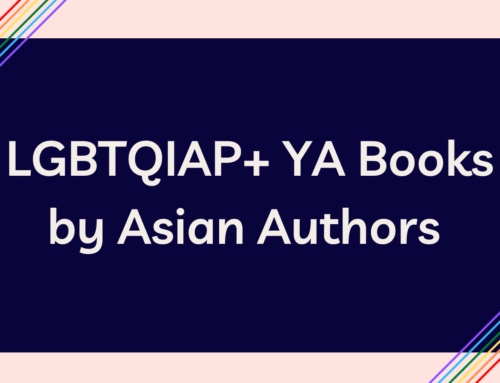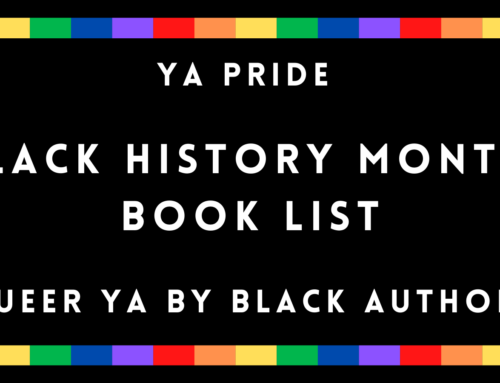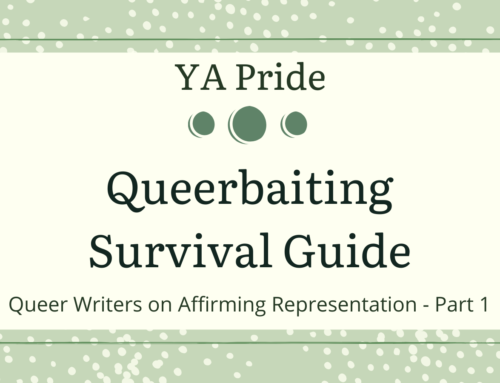For Asexual Awareness Week we reached out to bloggers who identify somewhere on the asexual spectrum to write posts related to asexuality and YA. We’re happy to bring you the third post in this series! Check back every day this week for more posts from other great guest bloggers.
by Nakia
I was seventeen when I read Mockingjay.
I’d read the first two books in The Hunger Games series less than a year earlier, a recommendation from my contemporary literature teacher who convinced me that it was worth my time if only because the protagonist was a woman of color. All the English teachers I had in high school knew that I craved young adult books with diverse characters and complex stories, and The Hunger Games met my interests perfectly. I bought the entire series the day Mockingjay came out and read it from start to finish during orientation week for my first year of college.
Of the new friends I made during that first week, I was the only person who had read the series and hadn’t hated the last book. I’d had issues that I wasn’t quite able to explain, but none of them had to do with the major complaints that I heard over which characters were killed and how they died, over the terrible pacing in the last few chapters, over the fact that Katniss ended up with Peeta. I had never shipped Katniss with Gale so the fact she and Peeta got married wasn’t upsetting to me. What was upsetting was the fact that she and Peeta had children.
From the first chapter of The Hunger Games, Katniss talks about the fact that she didn’t want children. It’s repeated multiple times in each book and she never shows any doubt towards her lack of desire to have kids, even if she lived in a world where having kids was a safe thing to do. And yet, fifteen years after the Games are over she agrees to have children for Peeta’s sake. It made me uncomfortable because while part of me thought that it was just her way of showing how much she loved him, couldn’t he have shown her how much he loved her by not begging her to have kids?
At this point I still wanted children, but I understood a lot of the reasons people had for not having kids. In time I understood that Katniss having children played into heteronormativity, which insists that being a cisgender, heteromantic and heterosexual individual who complies with all societally determined gender roles is the correct way to be. Everything else is wrong. Because she was physically able to bear children she was expected to, and that seemed – and is – completely unfair.
I reread The Hunger Games series at age nineteen in anticipation for the first movie.
During my reread I noticed that Katniss doesn’t express the standard feelings of confusion that most young adult heroines feel in regards to her ‘romantic’ interests in the books. In the vast majority of young adult fiction that I’d read that involved love triangles, the character in the middle has feelings for both potential partners and is stuck figuring who they care about more. And while there is a fair amount of trying to understand their feelings for the other partners, there’s never anything to indicate that the character feeling desire is unexpected or unusual for them.
It wasn’t something I’d noticed or thought very much about during my initial reading because I felt that she had more important issues on hand than what her feelings for Gale and Peeta were. However, I also hadn’t thought about how uncommon it is to see a fictional character without sexual or romantic feelings. Even with the young adult stories I’d read previously in the back of my mind, it didn’t completely hit me the first time around that one of the reasons I related to Katniss so well was because she wasn’t preoccupied with those relationship desires that were so frequently assumed to exist in everyone. At no point in time did Katniss see herself as weird for her lack of desire – it was simply a fact of her life that other people felt things she didn’t feel and she’s okay with that. The confusion that Katniss feels in connection to relationships is always in regards to the development of unusual feelings instead of in her lack of them, and in navigating how to pretend to be someone she’s not.
For all non-straight orientations, the redefining of personal relationships against what heteronormativity insists relationships should be is important in the journey to self-acceptance. People who identify as both heterosexual and heteromantic don’t have to worry about the societal expectations for their relationships in the way that individuals of all other orientations do, and while that’s sometimes more obvious for people who are attracted to the “incorrect” gender or genders, people who do not experience attraction at all do have to figure out what types of relationships are of greatest priority to them. For Katniss, it’s always her relationship with Prim, who was referenced in the first book as “the only person in the world I’m certain I love.” This familial bond is always more important to her than potential romantic or sexual bonds. Even if that relationship is ignored, Katniss prioritized friendship over the relationships Gale and Peeta wanted to have with her. A lack of desire for those types of relationships caused by a general lack of attraction is an issue that asexual and aromantic people frequently run into, so learning to understand what’s personally important in relationships and what types of relationships are wanted is extremely important.
At age twenty-one, I found my sexual orientation shifting.
I’d gone several years feeling secure in my identity as a panromantic demisexual, but it was becoming clearer and clearer to me that I no longer experienced romantic attraction and that I doubted I’d ever feel sexual attraction again. Eventually I found new words that fit me, but not after a cycle of questioning and confusion, especially since the change in my orientation was directly related to trauma. And it was hard to accept that who I am now is not exactly who I was before, even though who I was before has a great impact on my identity now. But my orientation now is valid, just like the orientation I had two years ago was valid then.
Katniss went the opposite route in regards to an orientation change – but that doesn’t negate or erase her status as a character in the aromantic and asexual spectrums. There are three points in the books where Katniss feels anything that can be understood as sexual desire in the series: during one kiss in the cave in book one, during a kiss on the beach in book two, and after the war is over and she’s started recovering in book three. As her feelings develop for both Peeta and Gale through the series, it’s still with the knowledge that romantic feelings are not the norm for her. This indicates her presence on the greyer areas of the asexual and aromantic spectrums but that doesn’t suddenly mean she’s alloromantic and allosexual.
Representation and diversity in young adult literature is necessary. I started actively searching for books with LGBTQIA+ characters when I first started questioning my orientation and as I went from struggling to acceptance, the types of books I needed shifted. I went from reading books solely about white gay men to reading every book with an LGBTQIA+ person of color I could find. Finding people with similar experiences and backgrounds is crucial in helping people feel like they belong, especially when they’re part of marginalized groups. At this point I haven’t read other books with asexual or aromantic characters yet, but I know as we’re recognized more and more by the LGBTQIA+ community there will be more works published and more things to choose from. Having Katniss Everdeen represent my communities is an important start and while many people might argue that she doesn’t count as canon representation because her orientations weren’t explicitly defined in the books, she’s consistently helped me feel not so abnormal.
—
Nakiya is a black, queer, greyromantic and asexual college student who currently lives in the Pacific Northwest. When she’s avoiding grad school preparation she can be found on Tumblr at lemonyandbeatrice where she blogs about diversity in media, asexuality, trauma, and mental illness. Oh, and lots of Marvel.




